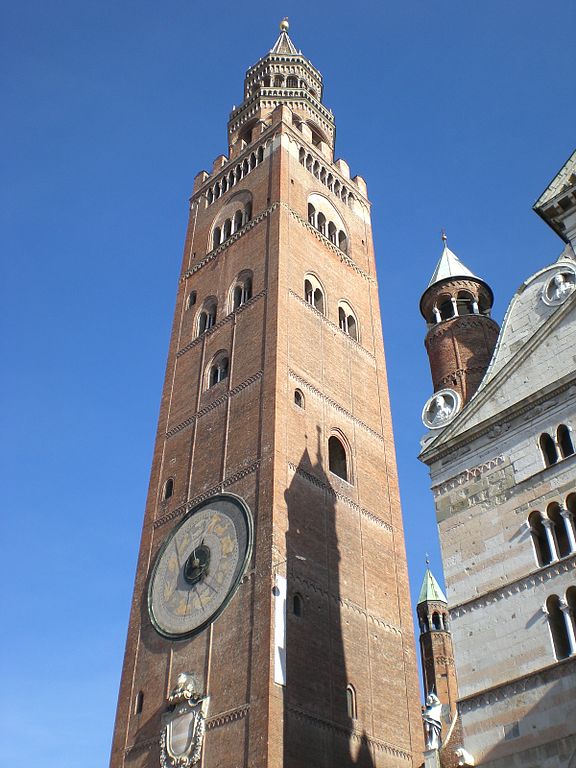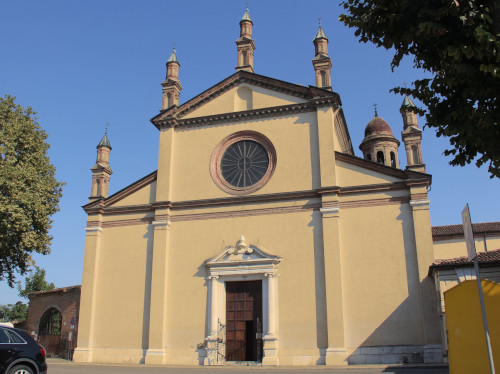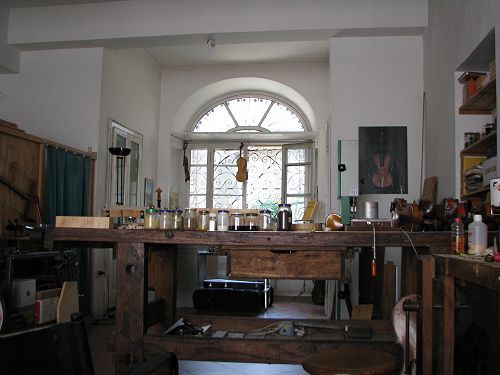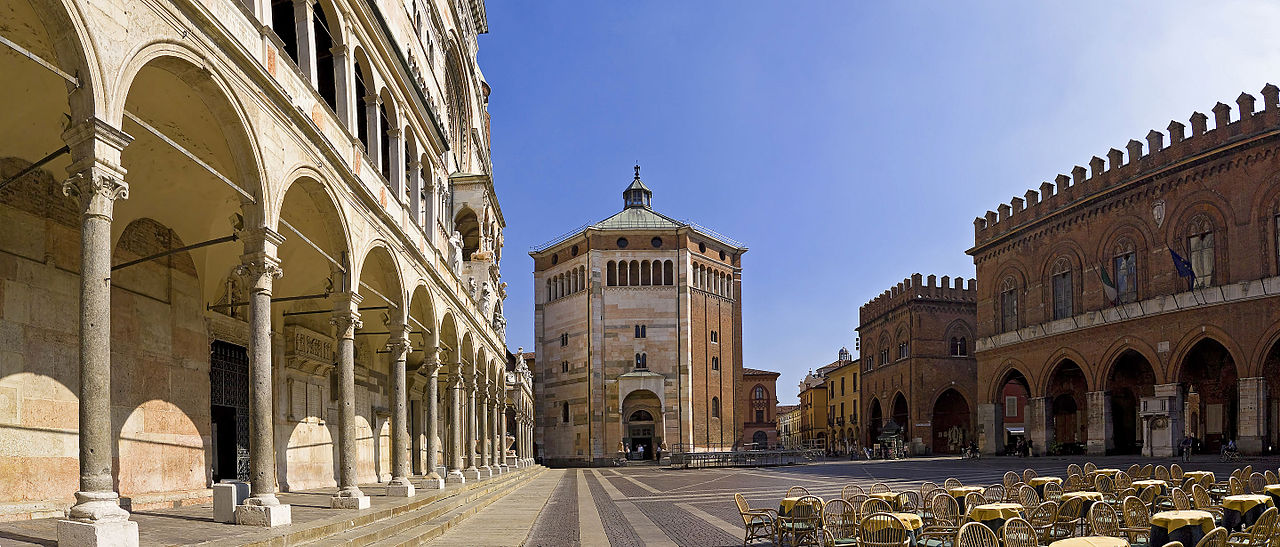
Town Hall

Torrazzo

Church of San Sigismondo

The violin maker's workshop

The appeal of Stradivari's city, the beauty of its city centre, the poetry of the river Po...
Come and discover the territory also by bike, tasting the produce and products of this fruitful land
Violin maker's craftsmanship UNESCO World Heritage since 2012
European Region of Gastronomy since 2017 (with Bergamo, Brescia and Mantova)Come and visit Cremona with us
City centre – A pleasant stroll to discover the history of Cremona getting close to its Roman origins with the remains of the paved road in via Solferino and going to the splendour of the Middle Age with the monumental complex in piazza del Comune, composed of its several buildings: St. Maria Assunta's cathedral, St. John's Baptistery, the Town Hall, Loggia dei Militi and the well-known Torrazzo, eternal symbol of the city and seat of the Vertical Museum. In addition, the cathedral offers inside a magnificent cycle of frescoes created at the beginning of the 16th Century by leading characters in the artistic history in northern Italy at that time: Boccaccio Boccaccino, Gianfrancesco Bembo, Altobello Melone, Girolamo Romanino and Giovanni Antonio de' Sacchis named "Pordenone". Last but not least the Diocesan Museum, that hosts some art works coming from different points of the diocese.
Cremona, city of music – The musical itinerary offered by ACuTo-Cremonaguide follows the origin and development of the local violin making school thanks to the violin making shops located in the historic centre and the Violin Museum without forgetting the prestigious theatre "Ponchielli" and the impressive organ in the cathedral. You can even abandon yourself to the sound of Cremonese instruments experiencing a short concert in the baptistery or directly in the auditorium at the Violin Museum. In addition, the tradition of pipe organs led by the craftsmen in Crema who still manufacture and restore this kind of instruments today.
The Roman City – Discovering the origins of the city visiting the Archaeological Museum "San Lorenzo" and proceeding to the paved road in via Solferino descending to its original level; furthermore, the remains of the Domus Romana in Piazza Marconi.
Cremona and the Renaissance – Discovering the artistic and architectural aspects of the Renaissance such as the frescoes cycle in the cathedral, the monastic realities such as St. Abbondio, with its reproduction of the Holy House of Loreto, or St. Agostino, and the frescoes in the churches nearby: St. Agatha's and St. Margherita's. In addition you can visit Palazzo Raimondi and the Civic Museum "Ala Ponzone" located today in Palazzo Affaitati, where you can discover the famous painting St. Francis of Assisi in Ecstasy by Caravaggio and l'Ortolano by Arcimboldo. The itinerary ends at the suburban complex of St. Sigismondo, built in the second half of the 15th century according to Bianca Maria Visconti's wishes.
Cremona and the Fascism – This unusual but interesting itinerary is mainly structured among the central piazza del Comune with Palazzo dell'Agricoltura and piazza Stradivari with Casa delle Corporazioni, Palazzo Adriatica, the Central Post Office building and Palazzo INPS. Proceeding to the Arcade 23rd March (later renamed Galleria 25th April) and to Piazza Marconi with its Palazzo dell'Arte, where today the Violin Museum is located. From the city centre you can reach the former Sanatorium Aselli, the several school buildings in the quarter Castello, the church of St. Ambrogio designed by the famous architect Muzio and the floodplain of the river Po, with the sport centre Canottieri Baldesio and the former heliotherapeutic summer camp Colonie Padane.
Discovering the territory – The Province of Cremona, rich in art and history, offers many suggestive places to be discovered: Crema city of contention between Lombardy and Veneto, Pizzighettone with its city wall and the possibility of a pleasant cruise on the river Adda, Soncino which belongs to the circuit The most beautiful villages in Italy with its Sforza fortress and the museum of the Jewish pressmen. Furthermore, you can choose Casalmaggiore a nice place on the river Po bordering with Emilia Romagna where you can discover its precious museum of old pieces of jewellery and bijous. What is next? A relaxing cruise on the river Po to conclude your discovery at the best.
Each proposal can be combined with tastings of typical products upon request. Contact us to have a CUSTOMISED PROPOSAL suitable for ADULTS or SCHOOL GROUPS. For info and reservations: +39 3402307925
ACuTo Cremonaguide – APS association promoting the cultural heritage for touristic purpose

